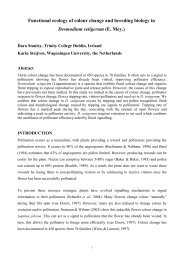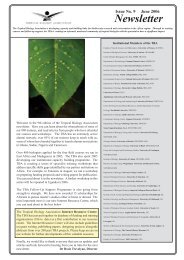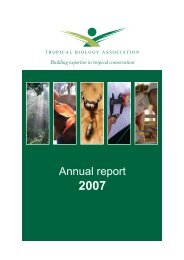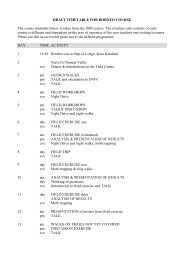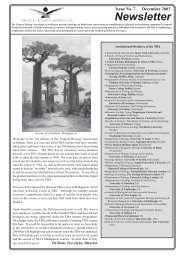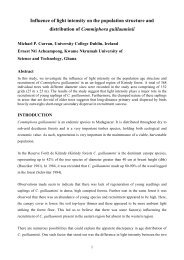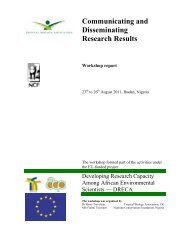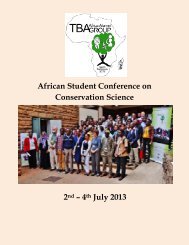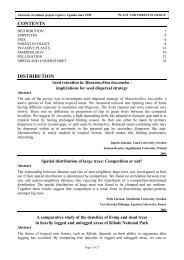Download TAAG Book of Abstracts - Tropical Biology Association
Download TAAG Book of Abstracts - Tropical Biology Association
Download TAAG Book of Abstracts - Tropical Biology Association
You also want an ePaper? Increase the reach of your titles
YUMPU automatically turns print PDFs into web optimized ePapers that Google loves.
Breeding Habits and Nesting Success <strong>of</strong> Village<br />
Weavers (Spotted–Backed) Ploceus cucullatus at Soba<br />
Region, Khartoum State Sudan<br />
*Noon Bushra Eltahir and Dawi Musa Hamed<br />
University <strong>of</strong> Khartoum, Faculty <strong>of</strong> Science, Department<br />
<strong>of</strong> Zoology<br />
*E-mail for correspondence: nanobush@hotmail.com<br />
Abstract<br />
Field observations were made <strong>of</strong> the breeding habits <strong>of</strong><br />
the Village Weaver (Spotted–Backed) Ploceus cucullatus<br />
at Soba Region, Khartoum State, Sudan, from March to<br />
September 2011. This species is widespread in most <strong>of</strong><br />
sub-Saharan Africa. The maximum total numbers <strong>of</strong><br />
investigated nests were 130, which were built on a<br />
Balanites Egyptica (Hajlij) tree. Descriptions are given <strong>of</strong><br />
the nest, nest building, nest sites, the roles played by<br />
the male and female members <strong>of</strong> the pairs during the<br />
nesting period, eggs laying, incubation and hatching.<br />
This species builds a large coarsely woven nest made <strong>of</strong><br />
grass and leaf strips with a downward facing entrance<br />
which is suspended from a branch in a tree. They bred<br />
socially and males build several nests ranging from 2 to<br />
5 nests. Average number <strong>of</strong> eggs per nests are 2 (N=13).<br />
Breeding success was high with nine out <strong>of</strong> 13 nests<br />
producing fledglings. Breeding success was calculated<br />
from nests that were followed from egg laying to<br />
fledgling. The daily survival probability would be 0.9316<br />
using a nesting period <strong>of</strong> 25 days and the total survival<br />
probability would be 0.17. So there is a 17% chance that<br />
a nest will fledge at least one young.<br />
Keywords: Village weaver, breeding, egg laying,<br />
incubation and hatching.<br />
<strong>TAAG</strong> First African Student’s Conference, Nairobi. 2-4 July, 2013 51




